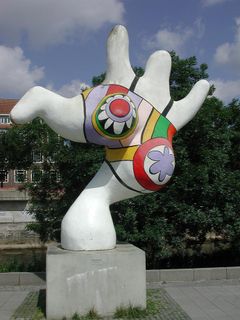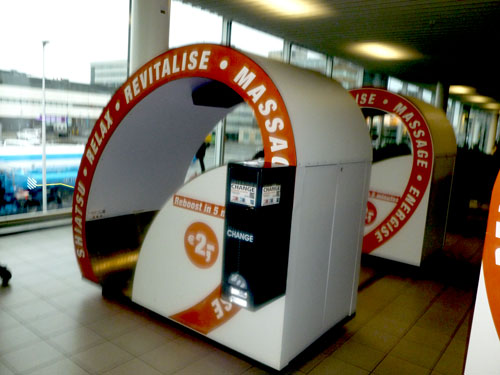Home | Intervention Overview | Office Cockpit - Working with Dignity
Office Cockpit - Working with Dignity
• Evelin Lindner, Idea
HumanDHS is primarily grounded in academic work. We are independent of any religious or political agenda. However, we wish to bring academic work into "real life." Our research focuses on topics such as dignity (with humiliation as its violation), or, more precisely, on respect for equal dignity for all human beings in the world. This is not only our research topic, but also our core value, in line with Article 1 of the Human Rights Declaration that states that every human being is born with equal dignity (that ought not be humiliated).
We agree with Shibley Telhami, Anwar Sadat Professor for Peace and Development, who advocates the building of bridges from academia as follows, "I have always believed that good scholarship can be relevant and consequential for public policy. It is possible to affect public policy without being an advocate; to be passionate about peace without losing analytical rigor; to be moved by what is just while conceding that no one has a monopoly on justice." We would like to add that we believe that good scholarship can be relevant and consequential not only for public policy, but for raising awareness in general.
Currently, many are glued to their chairs in front of their desks for hours, clutching their computer mouse, rigidifying their bodies, and acquiring back pain. An architect from an Arab country recently said: "With the chair, we also acquired back pain." This ought to be changed. Merely introducing "ergonomic chairs" is not sufficient. The basic concept has to be humanized. No longer should the desk with its mounted computer be primary and the human body secondary. The human body has to be at the center of attention, while the machines have to be brought to the body and adapted to the body, not vice versa.
Evelin Lindner explains: "My starting point for designing a home is to refrain from being caught in categories of normality which indicate chains of associations such as 'a flat is, preferably, made up of a bedroom with bedroom furniture plus a living room with living room furniture, entailing chairs and tables, plus...' This list can be continued almost endlessly.
Rather, I ask 'What do I enjoy?'
Just to give you one example, I do not enjoy sitting in chairs. Chairs rigidify the body (Study: Sitting Up Straight Hurts Your Back). In contrast, I appreciate sitting on surfaces that allow for more flexibility, similar to how children usually like to move. I remember fondly my time in Egypt, where traditionally whole families sit on larger surfaces, made of matrasses or cushions, either on the floor or as mastabas. This allows for flexibility of movement, but also for closeness with others, if this is desired. Chairs not only rigidify, they also separate. My time in China and Japan, as in many other countries in South East Asia, was equally agreeable. Squatting and sitting on the floor is something that looks difficult only to stiff Westerners. Westerners ought to abandon their arrogant assumption that chairs have something to do with 'civilisation.' An Iranian architect told me that back problems in Iran are on the rise in correlation with the use of chairs. Westerners ought to learn from the majority of the citizens of the world, namely that one can gain much for one's health merely by looking for alternative solutions for chairs.
The problem with chairs is that its original function to elevate a person is lost as soon as everybody is sitting on a chair, and we are left with nothing but back pain. Chairs are like thrones, they give status; this was their original purpose. The chairperson, after all, leads the meeting, and a professor 'holds a chair.' On everyculture.com, we read: 'With its long history of hierarchical social relations, Rwandan culture puts great emphasis on practices of etiquette that demonstrate respect and emphasize social rank both inside and outside the family. Within the family, chairs are traditionally reserved for men, while other family members sit on mats on the floor. Men eat first, with women and children eating after. Visitors are given the best chairs and the first choice of food and drink.'"
The Office Cockpit project attempts to dignify work and create a more functional solution, a solution that later could also be emulated by developing countries: the West ought to do more than bringing back pain as price for development. (Study: Sitting Up Straight Hurts Your Back)
At the current juncture of human history, everything needs to be probed, from micro levels (our consciousness, etc.), to meso levels (how families live together, in which kinds of environments, etc.), to macro levels (what kind of global cultures and institutions we need, etc.).
The Office Cockpit idea is an idea that is located at the meso level, with anchorings in the nondual concept of Unity in Diversity. It can help nurture Unity in Diversity better than almost any other piece of furniture, because it combines the global and local, the universal and personal in unique ways. It enables people to feel at home everywhere, thus helping them let go of the idea that to feel home one has to "own" and "possess" a specific piece of land, building, and furniture, something which nurtures the sense of home on our entire planet together with our joint responsibility for our human habitat (this represents the Unity side of Unity in Diversity), while, on the other side, the Office Cockpit idea offers a deeply individual expression of the diversity which exists among human individuals on this planet, a diversity that is crucial for unlocking the creativity that humankind is in need of if it wishes to face its challenges (this serves the Diversity part of Unity in Diversity).
Similar to our World Clothes for Equal Dignity project, also the Office Cockpit project has the aim to provide funding for our research. Part of the profit is designed to finance scholarships for doctoral research that study the concept of dignity, and probe how a world can be built that entails less disrespect and humiliation.
Ideas:
1. As for the seat, ideas may be gathered from Mercedes seats, dental chairs, and massage chairs. The aim must be to offer users a way to adapt the surface on which to place their bodies to their needs rather than to force them into rigidity.
2. As for the atmosphere to be created inside the Office Cockpit, insights from research on creativity are useful. Instead of cluttered offices, creativity, in order to flourish, needs an uncluttered, wide horizon. The Office Cockpit offers this through its form (no space for clutter) and the application of information technology (the user can fill the Office Cockpit with tailor-made images and sound). Research shows also that round shapes help us relax more than rectangular shapes, and the Laboratory for Visionary Architecture (LAVA) has developed the "Hotel Room of the Future." See a demonstration at http://news.bbc.co.uk/2/hi/technology/7795601.stm!.
3. As for the information technology solutions, see, for example, Public Key, and Opticon SIM card, or Jooce, see also cloud computing.
4. As for the outer shell design, ideas may be gathered, for example, from Niki de Saint Phalle.
| Niki de Saint Phalle, Nanas, Leibnizufer, Hannover, Germany. Click on the pictures to see them larger. |
|---|
Links
Please note that the entire HumanDHS website is maintained by volunteers, since its inception in 2003, and this is mainly done by Evelin Lindner. Until 2012, she usually pasted interesting news into this Links section. From July 2012 until 2017, she tagged interesting information on delicious.com. From 2017 onward, you see Evelin's personal list of interesting web links on Twitter: Follow @evelinlindner
The Sitting Disease
'Your Office Chair Is Hurting You: But also, forget standing desks. Try ‘active sitting,’ according to a trauma surgeon who wants to cure sitting disease', by Ashley Abramson, Medium, November 5, 2019: Dr. Turner Osler: The sitting disease "is a constellation of obesity, hypertension, diabetes, and heart disease that seems to come as a package. We’re in an epidemic of all these things. It’s likely the case that sitting still all day is mostly the source of these problems." See https://qor360.com/about/
| Massage chair at Schiphol airport, tested by Evelin Lindner on 17th December 2013: here, several of her ideas are already brought together: massage, sound, and images. Click on the picture to see it larger. |
|---|


